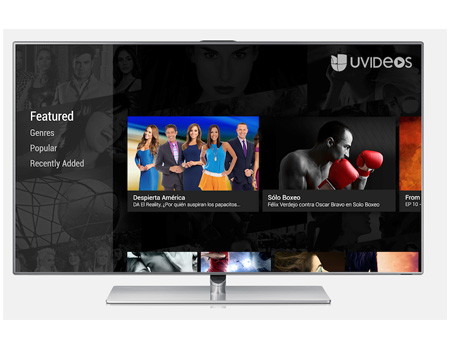New Connected TVs Lead Back to the Future

With over 95% of the TV industry’s $150 billion in revenue still coming from advertising and multichannel subscription channels on the television set, it isn’t surprising that one of the top priorities for industry executives at this week’s CES will be new TVs.
Some of that interest will be focused on new 4K TV sets as operators such as DirecTV, Comcast and some over-the-top providers begin streaming UltraHD content to connected TVs. In addition to Netflix and Amazon, who have announced that they are producing original fare in 4K, M-Go, a joint venture between Technicolor and DreamWorks Animation, launched 4K streaming in November and now offers about 100 movies and TV shows on Samsung UHD TVs.
But with 4K broadcasts years away for most programmers, much of the focus will be on connected TVs and the opportunities they will create for new products and revenue streams.
“Half of all U.S. households now have some form of a connected TV,” says Bruce Leichtman, president and principal analyst of media research company Leichtman Research Group Inc. That number represents a major increase from 2010, when about 24% had a connected TV.
How those TVs are being connected is also shifting, Leichtman and others say. Game consoles are still the most popular way to connect a TV to the Internet, but streaming media devices such as Roku and Apple TV are proving increasingly popular. A number of companies, most notably Google and Amazon, have joined the game with streaming devices priced under $40.
At the start of the 2014 Holiday shopping season, the research firm GfK reported that 19% of all TV viewers now own at least one digital media player and that some 37% of homes were streaming content to their television sets.
The smarter way to stay on top of broadcasting and cable industry. Sign up below
Battle for the Couch
“Now that everyone has a smartphone, I think the next big trend is back to the TV via the Internet-connected game consoles and connected devices,” says Marc DeBevoise, executive VP/GM of entertainment, sports and news at CBS Interactive. “You have Roku, Apple TV, Amazon, the new Sony devices—there are five or six of them battling for the living room.”
Over time, these devices could help transform the way TV programming is viewed. “It is really the first time that the industry has been able to bring the interactivity and the features of the Internet back to the TV,” says Matt Murphy, senior VP, digital video distribution at Disney and ESPN Media Networks.
David Wertheimer, president of digital at Fox Broadcasting Co. notes that the company has been working with Yahoo and Samsung exploring interactive advertising as part of an effort “to give consumers new kinds of control over what they are watching.”
Most stress that it is still early days but DeBevoise adds that CBSN, the company’s live streaming news channel, launched on key connected TV devices, including Roku and Amazon Fire, in November prior to the launch of apps for Android mobile devices. “On a monthly basis we’re seeing some very nice consumption on Roku that rivals some of our Web partners that have hundreds of millions of users,” he says.
Showtime has launched its Showtime Anywhere app on a number of streaming devices and game consoles and has been experimenting with interactive features on LG connected TVs, notes David Preisman, VP of Interactive Television at Showtime. “The underlying experience of watching TV hasn’t changed much except for the fact that you can now consume it on additional devices,” he says. “So we’re interested in using this to give producers new ways of telling stories.”
The Internet connections of newer smart TV sets also make it possible to insert ads into video streams that are targeted to the demographics of the household and the programming.
Such efforts are also in their early days, given the fragmentation of the connected TV markets, admits Oren Harnevo, CEO of the ad tech firm Eyeview. “It is still small compared to mobile or desktop,” he says. But he cites research saying there will be over 750 million connected TVs around the world by 2018 and that initial results have been very promising, with targeted ads leading to a 20%-30% lift in purchases.
